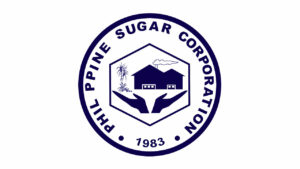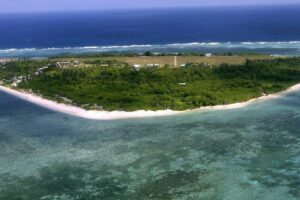BSP to extend rate hike pause — poll

By Keisha B. Ta-asan, Reporter
THE BANGKO SENTRAL ng Pilipinas (BSP) is widely expected to keep its key policy rate at a 16-year high on Thursday despite easing inflation as it remains vigilant against risks.
A BusinessWorld poll last week showed 15 out of 17 analysts expect the Monetary Board to hold the target reverse repurchase (RRP) rate steady at 6.5% on Dec. 14 — the BSP’s last policy review for the year.
A pause on Thursday would be the second straight meeting the BSP left rates unchanged since its 25-basis-point (bp) off-cycle hike on Oct. 26.
On the other hand, one economist said the BSP may raise policy rates to further anchor inflation expectations, while another expects the Monetary Board to start easing due to the sharp slowdown in November inflation.
“We believe that the BSP will keep the target RRP rate unchanged at 6.5% mainly because of the slower inflation rate in November,” Philippine National Bank economist Alvin Joseph A. Arogo said in an e-mail.
Headline inflation eased to 4.1% in November from 4.9% in October and 8% in November 2022. This was the slowest inflation rate in 20 months or since the 4% seen in March last year.
For the January-to-November period, the consumer price index averaged 6.2%, faster than 5.6% in the same period a year ago. This is still above the BSP’s full-year baseline forecast of 6%.
“We expect BSP to remain on hold at the next meeting on the back of receding pressures on inflation expectations,” Makoto Tsuchiya, an economist from Oxford Economics, said in an e-mail.
He noted the 4.1% inflation in November was a welcome development as it was at the low end of the BSP’s 4-4.8% forecast for the month.
“Recent strength of the peso, which we think will partly unwind, also gives BSP a reason to pause given the implication for lower imported inflation,” Mr. Tsuchiya said.
The local unit closed at P55.30 per dollar on Thursday, inching up by less than a centavo from its P55.305 finish previously. This was the peso’s strongest close in over four months or since its P55.19-per-dollar finish on Aug. 2.
“At the same time, the resilient domestic economy performance allows BSP to retain a hawkish stance by staying put,” Mr. Tsuchiya said.
The Philippine economy expanded by 5.9% in July to September, faster than 4.3% in the second quarter but slower than 7.7% a year earlier. For the first nine months, economic growth averaged 5.5%.
Mr. Arogo said that the general downtrend in gross capital formation, or the investment component of the economy, show that interest rates are “restrictive enough.”
Gross capital formation slipped by 1.6% in the third quarter, ending nine straight quarters of growth. This was a reversal of the 18.2% expansion a year ago and 0.3% in the second quarter.
Meanwhile, Nalin Chutchotitham, an economist for the Philippines from Citigroup, Inc., said the BSP may hike rates by 25 bps at Thursday’s meeting.
“We still see risks of a 25-bp rate hike, to 6.75%, should the BSP continue to place significant emphasis on anchoring expectations,” she said.
She noted that the BSP remained cautious even as November inflation slowed and emphasized that the balance of risks is still on the upside.
Earlier, the BSP cited higher transport fares, electricity rates, and international oil prices, as well as higher-than-expected minimum wage adjustments as key upside risks to inflation.
ING Bank N.V. Manila Senior Economist Nicholas Antonio T. Mapa said supply-side measures and base effects brought inflation down by 2 percentage points in 60 days, which shows that supply-side remedies are more effective in addressing inflation rather than rate hikes.
“With inflation down sharply, we believe inflation expectations have been re-anchored, with low contemporaneous inflation prints likely more impactful on expectations than anything else,” he said.
“With these data and developments, BSP will likely retain policy rates at 6.5% as it appears there is little impetus to tighten further. This could help the BSP re-establish some credibility as a data driven central bank,” Mr. Mapa added.
Meanwhile, Security Bank Corp. Chief Economist Robert Dan J. Roces said core and headline inflation may pick up in December due to the likely surge in demand as consumers spend more during the holidays.
“Thus, December inflation may slightly be higher on seasonality than November’s, to bring average inflation in 2023 to 6%,” he said in a note.
RATE CUT IN 2024?China Banking Corp. Chief Economist Domini S. Velasquez said the BSP may continue to adopt a hawkish stance due to upside risks, even as the impact of supply shocks in August and September have dissipated.
“In the first half of 2024, upward pressure on food prices (particularly rice) caused by El Niño, possible fuel price increases due to (global) production cuts, and higher-than-expected minimum wage hikes are expected,” she said.
Still, inflation is projected to settle at an average of 3.7% next year, which could provide room for the BSP to cut its reserve ratio requirement (RRR) or interest rates in the second half.
BSP Governor Eli M. Remolona, Jr. last week said it is premature to discuss policy easing in 2024 until inflation stays comfortably within the 2-4% target range.
He also said there will be no cut in banks’ RRR while the BSP remains hawkish.
The RRR for big banks is currently at 9.5%, while the ratio for digital banks is at 6%. The BSP also set the RRR for thrift banks, and rural and cooperative banks to 2% and 1%, respectively.
For Mr. Tsuchiya, the BSP may cut rates in the second quarter of 2024.
“There would be less pressure on both currency and inflation, while growth momentum will stay subdued given soft global economic growth and the impact of past monetary tightening on private domestic demand,” he said.
Ms. Chutchotitham said the BSP may start policy easing in the third quarter next year, with a gradual cut of 25 bps in each meeting up to the rest of 2024.
“We expect end-2024 interest rate to remain elevated to 5.5% to help ensure inflation would remain within target,” she said.
Meanwhile, Mr. Arogo said in the absence of severe weather disruptions, inflation could fall below 4% within three months.
“Nevertheless, we continue to anticipate that price growth would only settle sustainably within the BSP’s 2-4% target range starting fourth quarter of 2024. As such, the BSP should only cut rates in the fourth quarter 2024 (total of 50 bps, in our view),” he said.
Full-year inflation may hit 6% this year, according to the BSP. For next year, the BSP sees inflation averaging 3.7% before easing to 3.2% in 2025.




